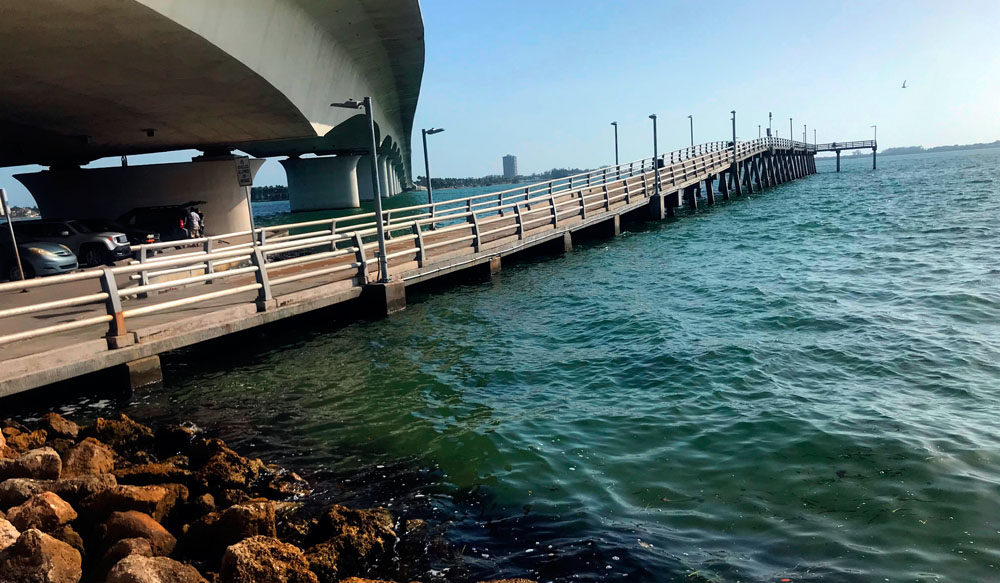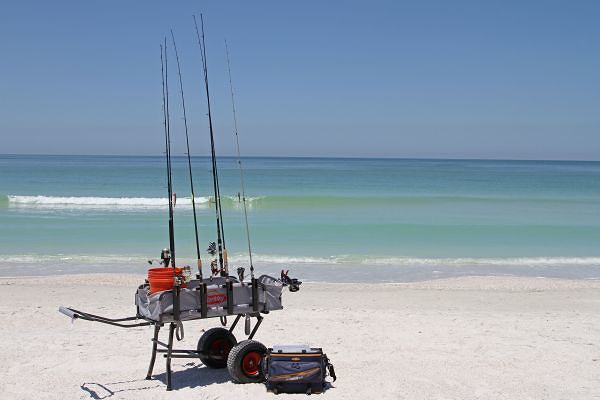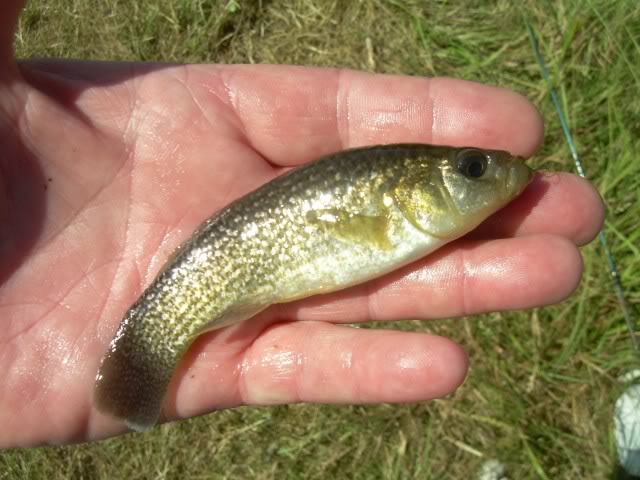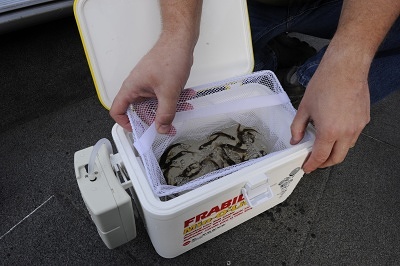Piers can be one of the best places to fish in Florida but they can also be one of the most difficult. Here are 5 tips to help you have a more successful trip and avoid some of the headaches associated with pier fishing.
- Don’t always fish at the end of the pier
- Find the troughs behind surf breaks
- Find the holes under the pier
- Avoid crowded areas when possible
- Pay close attention to the current and use it to your advantage
1. Don’t Always Fish the End of the Pier
On most piers across the state anglers tend to congregate at the end of the pier. Their theory is the deeper water will hold more and larger fish. This is not always the case, and in fact, more frequently than not, flawed logic. The majority of larger fish (with the exception of Kingfish) and a much larger number of fish are caught in the shallower waters around piers. Species such as Whiting and Redfish have been known to go so shallow that their tails and sometimes even their backs are exposed to the air. If the fishing is HOT at the end of the pier, migrate there, but do not only focus on the end.
2. Find the Troughs Behind Surf Breaks
Oftentimes some of the best fishing around piers will be in the deeper channels that are just behind a surf break, known as troughs. These troughs are where many fish move along the beach in search of food that is stirred up by the surf. Using just enough weight to hold bottom, cast into this zone and you are sure to find fish.
3. Find the Holes Under the Pier
Wave action against pylons that hold a pier up cause odd currents. These currents cause deeper holes to form in some areas around the pylons. These hole can hold all kinds of fish, and fairly large fish as well. The fish use the holes as cover to ambush prey that is moved around the structure of the pier. Find these holes and drop live bait in them and success will come!
4. Avoid Crowded Areas When Possible
One of the headaches associated with pier fishing is the crowds and the tangled lines that can happen in these crowds. To avoid these headaches, avoid the crowds when possible. Using tips number 2 and 3 will help you find a good fishing spot on the pier that may not be crowded, or fished at all.
5. Pay Attention to the Current
Most days on piers there will be a current. Some days it will be barely detectable and some days it will be rolling like a fast flowing river. Paying attention to the current and using it to your advantage will lead to less headaches (tangled lines with other anglers) and more fish. When fishing for Whiting, Pompano, Spanish Mackerel and other popular surf fish that move through the current a lot, note the current and cast parallel to it with the current pulling your bait away from you (this will prevent the bait from coming back at you and tangling up). If fishing under the pier drop strait down on the side that will allow the current to pull the bait under the pier. No matter where you are fishing be aware of where other anglers have their baits and try not to cast in an area that the current will cause a tangle.




